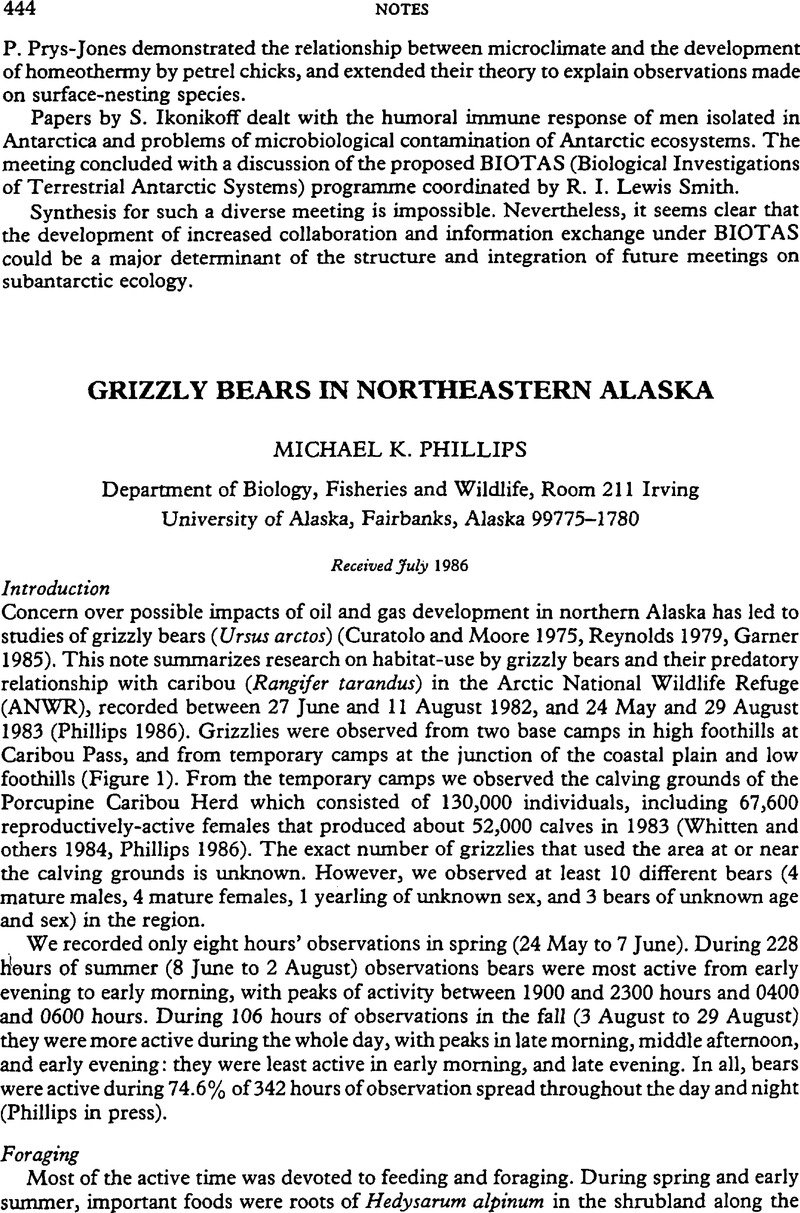Reynolds, H. V. 1979. Population biology, movements, distribution, and habitat utilization of a grizzly bear population in NPR-A. In
Lent, P. (editor)
Studies of selected wildlife, fish, and their use of habitats on and adjacent to NPR-A 1977–78.
US Department of Interior,
Anchorage, Alaska.
1:
129–82.
Google Scholar 